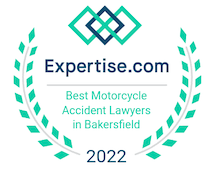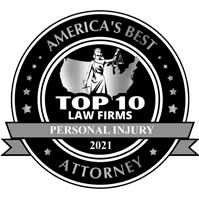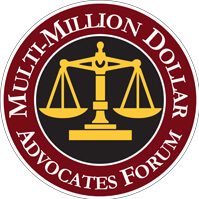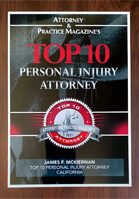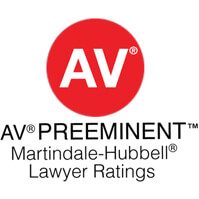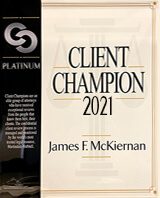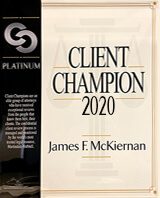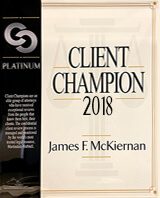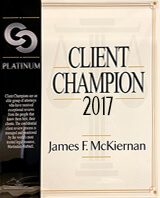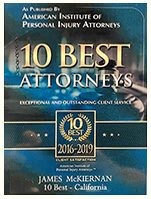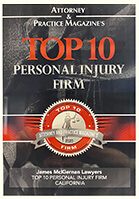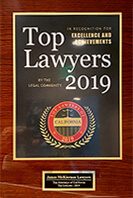The McKiernan Complete Guide to Car Accident Injury Lawsuits: Types of Collisions, Safety Tips, and What to Do After Being Hurt in a Crash
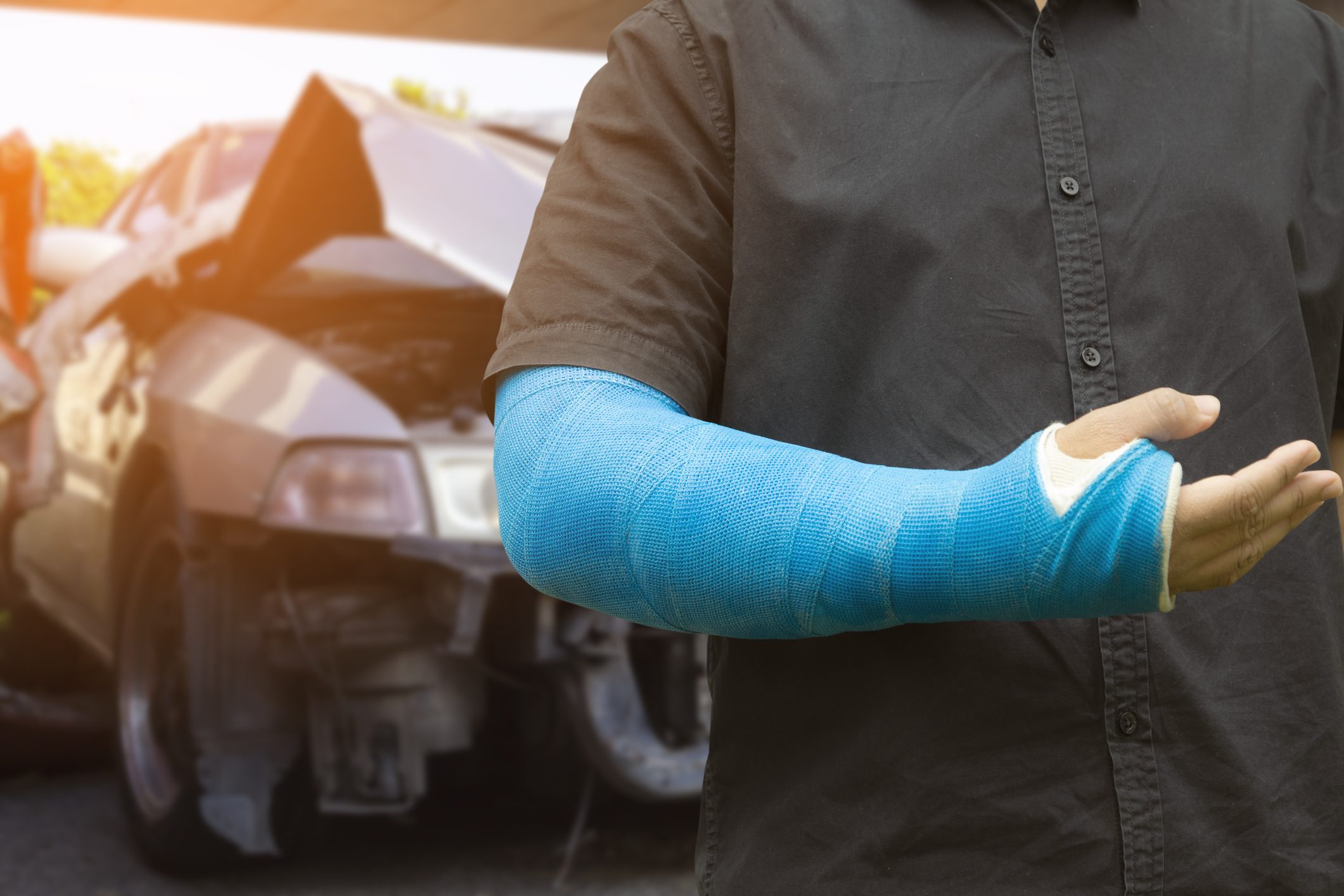
At James McKiernan Lawyers, after handling over 30,000 personal injury claims in our 40+ years of existence, car accident injury lawsuits remain one of our core focuses. We have always tried to provide the most accurate information to our potential and existing clients regarding car accident safety and news around San Luis Obispo County, and we will continue striving to do so well into the future.
In our ongoing effort to provide you with the best information possible, we have created a fully comprehensive guide to understanding your rights and the factors surrounding car accident injury cases.
Below you will find information on all of the following:
- What Kind of Damages Can I Recover After a Car Accident Injury?
- What to Know About Car Accidents in San Luis Obispo County
- Common Types of Car Accidents
- Basic (including Rear-End and Lane Change Collisions)
- Highway
- Rollover
- Dangerous Weather
- Drunk Driver
- What to Do After Suffering a Car Accident Injury
- as a Driver
- as a Passenger
What Kind of Damages Can I Recover after a Car Accident Injury?
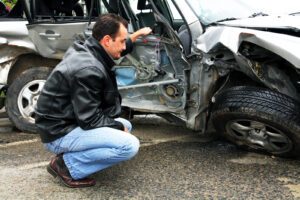
After a car accident, it is natural to have many questions running through your mind. “How will I pay my medical expenses?” “How can I pay my mortgage if I am unable to work?” “What if I never recover completely?” Fortunately, a San Luis Obispo auto accident lawyer can help you find the answers to those questions.
When you suffer an injury in a car accident, the “at fault” driver’s insurance company is often responsible for paying damages. While this may seem cut and dry, in reality, collecting damages is not easy. Insurance companies excel at reducing their own payouts. They know how to pressure the injured into accepting a lowball settlement. As such, never sign anything without first speaking to an experienced San Luis Obispo auto accident lawyer.
Recovering Car Accident Damages
The main goal of compensation is to help individuals injured in an accident become whole again. This includes being whole physically as well as emotionally. There are many types of damages you can claim in a personal injury lawsuit.
Some of the car accident damages you may seek, include:
- Medical Expenses. As a car accident victim, you can seek compensation to help you cover the cost of medical expenses both now and in the future. Medical expenses after a car accident can include:
- Rehabilitation
- Ambulance fees
- Doctor’s visits
- Surgeries
- Disfigurement
- Medical devices and accessories such as wheelchairs and crutches
- In-home services
- Long-term care
- Pain and Suffering. Pain and suffering are subjective. Yet, the injured can collect compensation for this suffering. It is the mental or physical distress they endured after the car accident. This includes:
- PTSD
- Anxiety
- Depression
- Nightmares
- Loss of enjoyment in life
- Lost Wages. After a car accident, injuries may cause you to miss time at work. For many families, a reduction in income is devastating and can throw them into financial turmoil. If your injuries are severe, you may not be able to work in your chosen profession again. In a personal injury lawsuit, you may seek compensation for any of your lost wages, as well as the loss of future earnings. You must prove that your injuries impaired your ability to work or diminished your ability to earn money in the future.
- Loss of Companionship. Some injuries may deprive you or your loved one of companionship. Unlike other types of damages, the spouse of the injured must claim these damages.
Insurance companies know that individuals injured in an accident need money now to pay these expenses. They use this as leverage to get the injured to sign an easy and quick settlement. These settlements are typically just a fraction of what you need to recover. Before signing anything, call us at James McKiernan Lawyers. We can fight aggressively for you and your right to full compensation.
What to Know About Car Accidents in San Luis Obispo
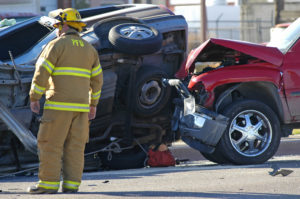
According to the California Office of Traffic Safety, San Luis Obispo experienced the following in 2017 with respect to car accidents:
- 1486 total fatalities and injuries (48th among all counties in CA)
- 238 alcohol-related accidents (30th among all counties in CA)
- 546 motorcycle-related accidents (4th among all counties in CA)
- 7 pedestrians age 65+ killed or injured (17th among all counties in CA)
- 127 bicycle-related accidents (5th among all counties in CA)
Most of the collisions were caused due to speeding drivers, although law enforcement reports that a significant number of collisions happened at night when the drivers could not clearly see the road.
Our team of professional San Luis Obispo auto accident lawyers are trained to investigate each auto accident. We can determine who was at fault and help you receive compensation for any injury or loss. Our law firm provides powerful legal advocacy for clients who were involved in head-on collisions, rear-end collisions, drunk driving cases, and many more cases.
Common Types of Car Accidents
As San Luis Obispo injury lawyers with more than 40 years of experiencing representing car accident victims, we at James McKiernan Lawyers have probably heard about every conceivable type of accident. Simple or gross negligence is the cause in most of these cases.
Speeding, drunk driving, and inclement weather all cause car accidents, but merely not paying attention is the most common cause. Texting while driving, talking on a cell phone, or turning to talk to someone in the car all fall within this category. As you know from being an accident victim, it only takes a few seconds of inattentiveness for a driver to cause long-lasting harm to others.
With that in mind, here’s a full breakdown of the most common types of car accident cases we handle:
Basic Car Accidents
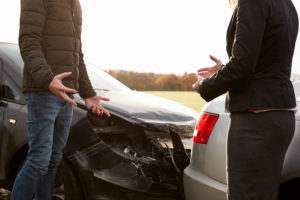
- Head-On Collision. This is among the most serious types of motor vehicle accident. It occurs when two vehicles moving in opposite directions collide with one another at a speed. A head-on collision is more likely than the other types to involve reckless or criminal driving behavior.
- Rear-End Collision. In this type of accident, a driver crashes into the back end of another vehicle. It often occurs due to following the other car too closely. As this is one of the most common types of car accidents on the road, we have provided further information below this list.
- Backing Accident. The causes for this type of accident can include a driver who fails to look over his or her shoulder or check the rearview mirrors to see if it is safe to back up the vehicle.
- Side Sweep Collision. A driver who fails to check both sides of his or her moving vehicle may hit the side of another vehicle. It also happens due to not following proper lane-changing procedure.
- Left Turn or U-Turn Collision. These types of accidents happen when two cars are traveling in opposite directions. One driver doesn’t see the other vehicle and runs into it when making a left turn or a U-turn, even when the U-turn was legal.
- Lane Change Collision. In the case of a lane change that results in a crash, the responsibility frequently falls on the driver performing the maneuver. However, we have provided additional information on this type of accident further down the page.
Additional Information on Rear-End Collisions
It is frequently the case that rear-end collisions happen because the rear vehicle failed to stop in time to prevent the accident. In this situation, the rear driver’s negligence caused their failure to stop. This negligence can include:
- Texting and driving
- Distracted driving
- Speeding
- Failing to yield the right of way
- Losing control of their vehicle
In some situations, however, the driver in front may share the blame in causing a rear-end collision. In this situation, it is possible that the driver in front was negligent in the following ways:
- They were driving with broken brake lights or taillights
- They were driving recklessly
- Their vehicle broke down with no warning
- They were driving under the influence
Additionally, the rear driver may not be entirely to blame for a rear-end collision if there is a multiple car pile-up.
The State of California recognizes that both or multiple drivers may be partially to blame for an accident. California’s Comparative Negligence Law allows for a partially at-fault driver to recover some damages. However, the court would reduce their compensation according to the percentage of assigned fault. For example, if you were 20 percent responsible for a rear-end collision in California, then the state will reduce your compensation by 20 percent.
If your claim goes to court, the legal system will apply California’s comparative negligence laws to your case. However, even before a claim becomes a lawsuit, these laws already apply. This is because the insurance adjuster will consider the fault of both parties when assessing what a case is worth. For this reason, it is helpful to have an experienced attorney on your side at all stages of your auto accident claim.
Additional Information on Lane Change Collisions
A lane changing car accident liability case is not always that simple to prove, as most highways and multi-lane roads have higher speed limits and heavy traffic. With drivers weaving in and out of traffic all of the time, it can be difficult to determine just who caused the accident.
There are a few important factors that will go into your liability case if you were hurt because of a lane changing accident. The four factors we will look closely at are breach, duty, causation, and damages.
- Breach. Did the other driver fail to meet his duty of checking all around before he or she changed lanes, causing an accident to occur?
- Duty. All drivers have a duty to drive responsibly at all times, which the driver who allegedly caused the accident may have failed to do.
- Causation. Were you injured due to another driver changing lanes, or were you injured as the result of another driving matter?
- Damages. Did you or another passenger suffer injuries that you can prove through medical records? Are you suffering from emotional distress since the accident occurred?
If the other driver committed an illegal maneuver that resulted in a lane changing accident, this may help prove that they are at-fault. Most states have laws concerning changing lanes that all drivers must obey or face penalties or fines.
For example, a driver must always signal correctly when they are about to make a lane change or while they are in the process of making a lane change. Even if they are not ticketed because of their actions, you may still use it in a liability case.
Highway Car Accidents

You are much safer after a car accident on a city street than you are if you get into an accident on a highway. Given the much higher speed limits on California highways, after an accident, your safety is in the hands of people approaching your vehicle at upwards of 60 miles per hour. At those speeds, getting hit by a vehicle is almost an assured death sentence.
For that reason, you should be extraordinarily cautious after an accident on the highway. It is safest to stay in your vehicle with your hazard flashers on until emergency responders arrive. Here are some other tips to ensure your safety after a highway accident.
- Look before you leap. Before you get out of your car, make sure your path is clear. Don’t let your confusion or panic following an accident provoke you into exiting your vehicle without knowing whether cars are approaching. This advice is best if you are able to get your car to the side of the road. If you are stranded with open lanes on both sides, stay inside and call 911.
- Make your presence known. Especially at night, it is important to signal to oncoming drivers that you are crashed. Bright clothing, reflective cones, hazard lights and road flares – which you should keep in your vehicle at all times – are good ways to signal other drivers.
- Shield yourself and your vehicle. You may run across a good Samaritan willing to park behind your vehicle to provide you and the other driver with some protection from oncoming cars. You’d be surprised how many helpful people you might find on the road after you are involved in an accident, and every little bit of help counts.
Rollover Car Accidents
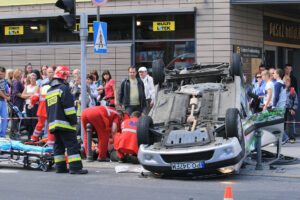
A rollover accident is often traumatic and life-threatening. When a 3,000-pound automobile rolls off the road, it can crush the occupants inside. In an effort to prevent fatalities and save lives, carmakers have turned their attention to reducing rollover accidents. Today’s cars now come equipped with safety features that help protect drivers and passengers during a rollover crash. However, rollover crashes are still some of the most dangerous accidents on the road.
When you get into a rollover accident, it is important to know what to do. Acting quickly and taking the right steps after a crash can have a significant impact on your ability to recover and get the money you need.
What Causes Rollover Accidents?
If you suffered an injury in a rollover accident, it is important to understand what could have caused this accident. There are numerous causes of rollover crashes. Since the majority of rollovers do not involve a collision with another vehicle, establishing liability is difficult. Knowing these causes can help you and your attorney pinpoint who is liable for your accident and injuries.
Frequent causes of rollover accidents include:
- Running over a pothole or road obstruction, resulting in tipping
- Taking a turn while going too fast
- Driving into a ditch
- Speeding
- Tire defects
- Suspension system defects
- T-bone accidents
- Striking a median or barrier
Some types of vehicles have a higher rate of rollovers than others. In general, any vehicle with a high center of gravity will rollover or tip easier. Some of the most common vehicles involved in rollover crashes include:
- SUVs
- Pickup trucks
- 15-seater vans
- Commercial vehicles
What Can You Do After a Rollover Accident?
A rollover crash can result in severe injuries. As an occupant in the vehicle, you may find yourself trapped in the car or crushed beneath the weight of the roof. Even if you do not believe you suffered an injury, chances are good that you have.
As such, it is important to act quickly and take the following steps:
- Seek Medical Attention. After any type of accident, it is important to seek medical attention. This is the most critical step you can take after an injury accident. Rollover accidents are especially traumatic. It is important to go to a hospital to undergo a professional medical evaluation. If you suffered an injury at the accident scene, call 911 to alert emergency medical teams to the accident scene.
- Talk to Police. If the police arrive at the scene, it is important to remain calm and speak with them about the accident. Give them the facts but avoid making statements that admit blame. Also, avoid speculating about what caused the accident. Be honest and forthcoming with the police and ask for a copy of their report.
- Gather Evidence. If you can, gather evidence at the accident scene. This includes taking pictures of the accident, road surface and crash damage. Be sure to take notes about anything that you believed contributed to the rollover accident, such as road hazards. If there are eyewitnesses or other drivers involved, get their contact information as well.
Dangerous Weather Car Accidents

If you’re a California resident, you know that you’re lucky to live in such a beautiful state. We are known for our sunny skies and pretty sights, but just like any other beautiful destination, we also experience inclement weather conditions. With bad weather comes an increase in vehicle accidents. Our San Luis Obispo auto accident lawyers know how scary it can be if you’re caught in a wildfire or flood while driving, so we would like to offer some helpful tips to help keep you safe:
For Driving Through a Wildfire
California residents are aware of the danger of wildfires, especially as a result of our recent changes in climate. Because of this, you might have to drive through or next to a wildfire, so it’s important to know how to navigate your vehicle through this safely.
First, roll up your windows and turn off your air vents; inhaling any wildfire smoke can be damaging to your eyes and lungs. Next, turn on your headlights to increase visibility, especially if you’re surrounded by smoke. Low visibility is expected, so drive slowly to avoid a collision.
If there’s fire approaching, turn around and drive your vehicle away if you can, or park behind a solid structure and keep low in your car. You could also exit your vehicle and run, although be warned: this can expose you to smoke inhalation injuries and wildfires can move very quickly.
For Driving Through a Flood or Heavy Rains
In early January of 2018, San Luis Obispo County experienced heavy rains and flooding that closed highways and local roads for a few days. With California’s rapid changes in climate, it’s crucial that residents remain vigilant and smart when they are caught in heavy rains.
First, slow your vehicle down; the road will probably be slick and slippery, which will make it more difficult to brake properly. Next, increase the driving distance between your car and cars surrounding you. This will prevent any rear-end crashes and will allow for sudden stops. Turn on your headlights, keep your windshield wipers on, and approach busy intersections with caution.
If you and your family follow these tips, you will have a better chance of avoiding a car collision on dangerous road conditions due to bad weather.
Drunk Driver Car Accidents
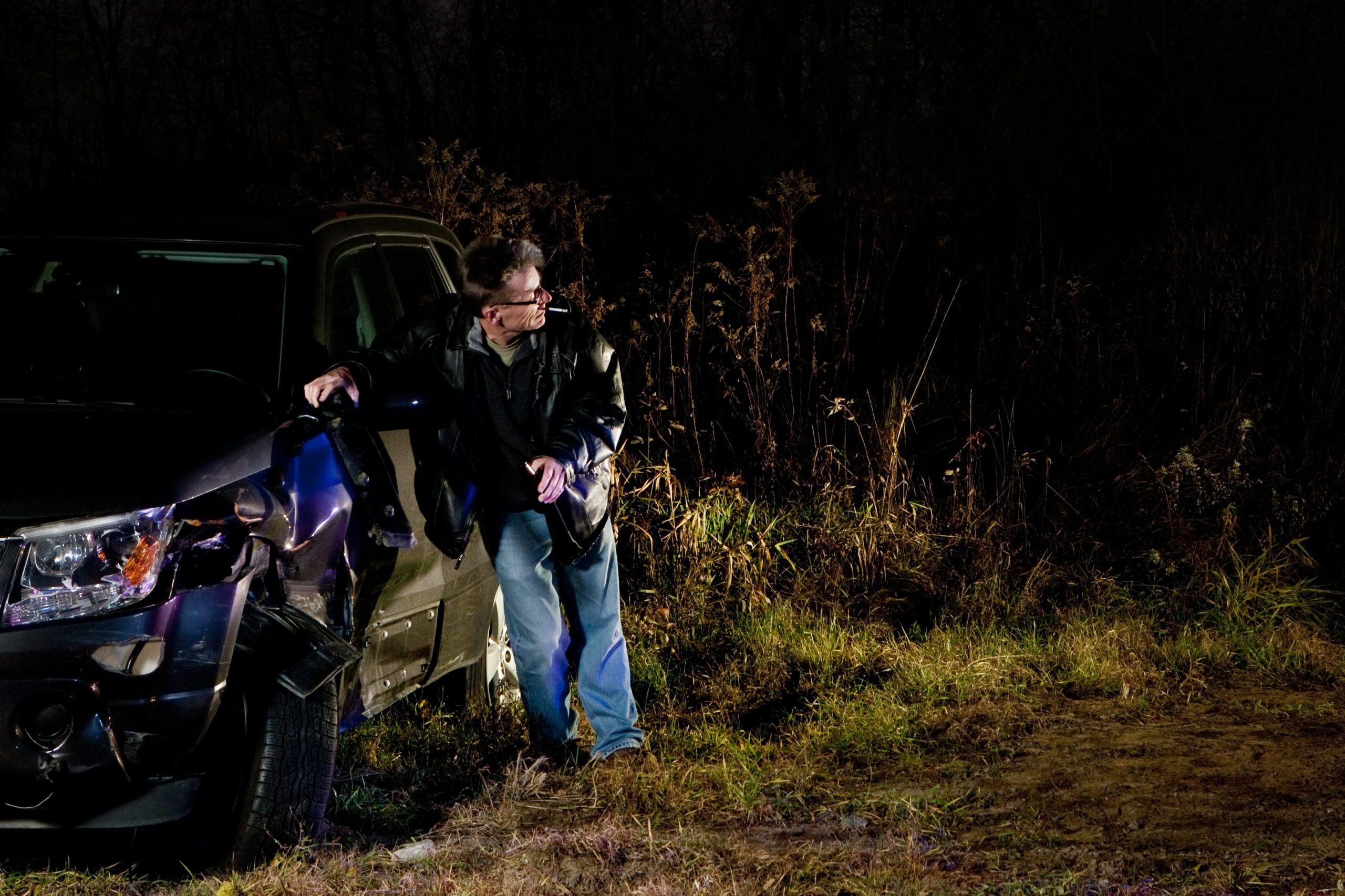
One of the most dangerous things you can be exposed to as a driver is another driver under the influence of drugs or alcohol. It doesn’t matter how safe you are driving or how adherent you are to the laws of the road; a drunk driver can come from anywhere, at any time, and cause serious damage to your property and your body. Making matters worse, a significant number of drunk drivers that cause car accidents tend to be below the legal drinking age.
Did you know that 17 percent of fatal alcohol-related accidents involve licensed drivers under 21? This is despite the fact that only 10 percent of licensed drivers are under 21. Additionally, underage drinkers tend to binge drink, leading to higher BAC and a higher rate of underage drunk driving accidents. In California, anyone under 21 who has a BAC higher than 0.01 percent can be charged with DUI.
Underage drinkers are more likely to behave recklessly on the road and are also less likely to wear seat belts. These factors can contribute to an increased likelihood of being involved in a deadly car accident.
If you have been injured by a drunk driver, you may wonder what legal recourse you have to cover your damages.
What to do if Struck by a Drunk Driver
- First things first, take care of your health. Seek medical attention even if you do not believe you have been seriously injured. Some injuries, like traumatic brain injury or soft tissue injuries, may not manifest right away.
- Document every aspect of the accident. Police will likely take care of much of this process, but having your own evidence is crucial to your claim. Photographs of the damage and your injuries, as well as contact information of witnesses, can go a long way in helping you secure damages.
- You will probably receive a call from the drunk driver’s insurance company shortly after your accident. No matter how cordial or sympathetic the representative is, the bottom line is that he or she is trying to get information out of you that might make it harder to pursue your claim. Do not tell them anything about the accident or your injuries. If you are offered a settlement, you should decline until you have spoken to an attorney.
- Perhaps the most important step – contact a car accident attorney as soon as possible. You need a trusted lawyer with experience in the field of drunk driving accidents to help you receive the best recovery possible.
What to Do After Suffering a Car Accident Injury
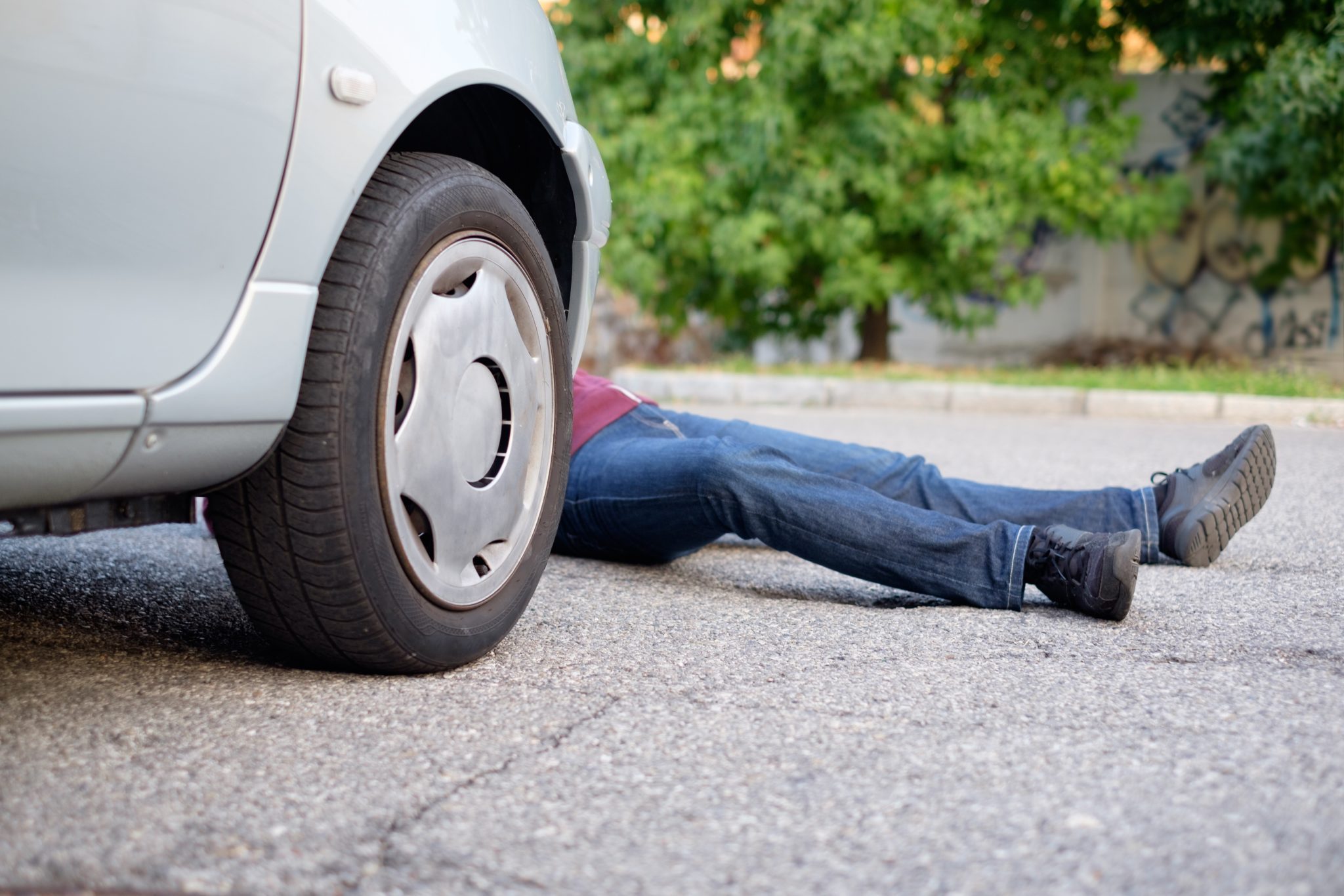
If you are involved in an automobile accident due to someone else’s careless driving, you are not alone. In 2016, 4.4 million Americans were hurt and more than 38,000 were fatally injured on the roadways. As reported by the National Safety Council the three largest causes were alcohol (30.8%), speeding (30.0%), and distracted driving (26%).
Your actions following an accident can make a huge difference in terms of safe-guarding your right to maximum compensation for your losses. The team of San Luis Obispo automobile accident attorneys at James McKiernan Lawyers, with upwards of 40 years experience in personal injury cases, recommend the following:
Driver Car Accident Injury
Immediately after the incident:
- Check for obvious injuries and call for emergency medical help if warranted.
- Notify law enforcement. A police report is a “must-have” document. Do not allow the other driver to talk you into settling things on your own.
- Contact your insurance carrier. Do not, under any circumstances, speak to the other driver’s insurance company.
- Take pictures and/or video of everything. This includes all the vehicles involved, the surrounding areas and any obvious injuries you sustained.
- Gather the other driver’s information and request a copy of the police report.
- Don’t talk to anyone about the accident, especially on social media.
- Never speculate about your physical condition.
- Refrain from saying “I’m sorry”.
It may take some time for injuries to present themselves. If you feel you need immediate attention, go to the closest hospital right away, then, always follow up with your personal physician.
After the incident, be sure to keep a detailed record of any and all medical appointments, time missed from work and any sick time or wages you lost. Retain any receipts for all out-of-pocket expenses. Remember that anything you say, to anyone, may be used against you. Do not post any details or comments about your accident or injuries on social media.
Passenger Car Accident Injury
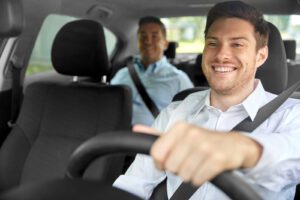
If you were a passenger injured in a car accident, you deserve compensation. In most cases, you will have an easier case because one or both of the drivers may be liable. When dealing with a personal injury claim, the plaintiff needs to prove liability (party at fault) and damages (the injuries incurred by the plaintiff).
Proving liability is not always easy, especially when neither of the drivers wants to take responsibility for their actions. This is why you should consider enlisting the services of an accident or personal injury lawyer. While the passenger injured in a car accident may not be at fault, the complication may arise with the other drivers involved.
Understanding Your Options
Often, making an insurance claim can be a lengthy process. This is especially the case with third party claims. As a passenger injured in a car accident, you will have medical bills that need to be timely paid. While your case is still under review, you might be able to file a claim to cover medical payments. This type of insurance cover is known as “med pay”. This coverage is available in personal car insurance policies.
It is important to understand that “med pay” is not based on who is at fault. It is a provision made to cover the immediate medical bills. However, you cannot file for lost wages and pain and suffering under med pay. These damages are covered by the insurer of the party at fault.
If the med pay in the policy is not sufficient to cover all your medical bills, you may be able to make a med pay claim on the owner or the driver of the car you were traveling in.
Contact James McKiernan Lawyers Today to Get the Compensation You Deserve for Your Car Accident Injury
Once you are involved in an accident, it is always in your best interest to seek advice from a personal injury lawyer. The James McKiernan legal team has experienced personal injury attorneys standing by to assist you in the process of seeking reimbursement and compensation. Don’t wait, call us at 800-200-HURT. We are ready to help.









